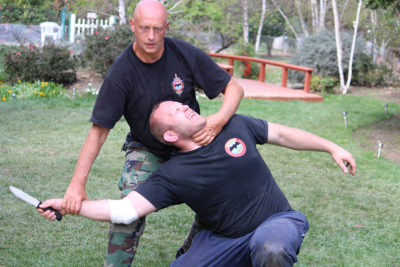Example: Copper. Most metals are malleable because the atoms can roll over each other and retain the structure of the crystal. Limiting my response to Ambient (Room Temperatures). 1. Sodium metal is kept immersed in kerosene to prevent their reaction with oxygen, moisture … Metallic bonding is different from ionic and covalent bonding. If we take a piece of aluminium metal and beat it with a hammer,we will find that the piece of aluminium metal turns into a thin aluminium sheet,without … I w, Adobe Creative Suite (After effects and Illustrator), American Sociological Association (ASA) Style Guide, 6th Edition. Why are metals ductile? How do you test an oxygen absorber? Metals are malleable – they can be bent and shaped without breaking. Non-malleable metals such as tin will break apart when struck by a hammer. 1 Answer. >> First of all most non metals are found in gaseous form . Thermal Properties of Malleable Cast Iron – ASTM A220. Why are metals malleable, ductile, and good conductors. That's why metals such as iron, copper, and aluminum are used for pots and pans. Credit: Buzzle. A metal (from Greek μέταλλον métallon, "mine, quarry, metal") is a material that, when freshly prepared, polished, or fractured, shows a lustrous appearance, and conducts electricity and heat relatively well. Metals are ductile i.e. Considering this, why are non metals not malleable?" Click to see full answer. While most malleable metals are also ductile, the two properties can be exclusive. Relevance? Metallic bonds consist of the attractions of the ions to the surrounding electrons. Thin sheets of gold, known as gold leaf, are primarily used in arts and crafts for gilding. 2 pages. Gold, silver, aluminum, iron, and copper are malleable. Explanation: brainliest plss. Such as metals are those elements which are malleable, ductile, sonorous and good conductors of heat and electricity. Since stress, Is it easier to frost a cold cake? Most metals are malleable because the atoms can roll over each other and retain the structure of the crystal. Non-metals are neither malleable nor ductile. When heat is applied to the metal, the free electrons near the source of heat gain a lot of energy, and start moving rapidly. Metals are malleable - they can be bent and shaped without breaking. Malleability in metals occurs because of the metallic bonds that keep the atoms in place. Metals are described as malleable (can be beaten into sheets) and ductile (can be pulled out into wires). Quick Answer: Is It OK To Leave Food In Crockpot Overnight. This is due to the effect that temperature has on the crystal grains within metals. Solid: All metals are solid except Mercury, the only metal which is liquid at room temperate. A metal that you can hammer into thin sheets is malleable. And this nature of breaking down defies the … When force is applied, the atoms slide from one plane past atoms in a different plane. In all scales, a high hardness number represents a hard metal. Metals are lustrous, malleable, ductile, good conductors of heat and electricity. The electrons are unrestrained and therefore begin to move around haphazardly when the source imparts kinetic energy into them. in-text citation only (author's name and page number), In-text citation with author's last name and page number, only. A. Bc5677. This is because they consist of layers of atoms. (d) Ductility. Question: Is It Bad To Put White Vinegar On Your Face? Metallic bonds involve all of the metal atoms in a piece of metal sharing all of their with delocalized bonds. So , for them there is no chance of malleability . A material is brittle if, when subjected to stress, […] Metallic bonding is it's own type of bond. Malleability and ductility are related. Metals are malleable and Ductile because of metallic bonding. Non-Malleable and Ductile: Non-metals are very brittle, and cannot be rolled into wires or pounded into sheets. Metals are described as malleable (can be beaten into sheets) and ductile (can be pulled out into wires). The energy is transferred throughout the rest of the metal by the moving electrons. Learn more. Post by natttt. Metals are malleable - they can be bent and shaped without breaking. Answer. This is because they consist of layers of atoms. This lets us deliver certified assignment assistance that has no Internet rivals. This is because of the ability of the atoms to roll over each other into new positions without breaking the metallic bond. 8 terms. Why are metals malleable GCSE? A malleable substance is easily changed into a new shape: 2. easily influenced, trained, or…. Heat get transmitted easily through metals by the means of these free electrons. Quick Answer: Can You Harden Rotted Wood? Metals are malleable – they can be bent and shaped without breaking. Carbon is actually a nonmetal, if you can believe the periodic table. This is because of the ability of the atoms to roll over each … There are bonds and … Being too brittle and weak for structural applications, metalloids are most often used in the chemical, electronics, and alloying industries. A single ounce of gold can be beaten into a sheet measuring roughly 5 meters on a side. Are ceramics stiffer than metals? Question 11 What is meant by saying that metals are lustrous? This is different from (where no electrons are shared at all) and (where the bonds exist only between two atoms). In-text citation with only author's last name and the page number. melting point (intensive): the temperature at which a substance melts. A metal is a lattice of metal "ions" in a "sea" of delocalised electrons - mobile electrons. … Pure metals are those metals that have not been alloyed with other metallic elements; commercially pure metals are 99% pure minimum. Luster: These have no metallic luster and do not reflect light; Conductivity: Poor conductors of heat and electricity; Melting and Boiling Points: The melting points of non-metals are generally lower than metals; Seven non-metals … Metallic bonds are non-directional. Gold is one of the 92 naturally occurring elements found on earth. No spacing between lines and paragraphs. Metals are typically malleable (they can be hammered into thin sheets) or ductile (can be drawn into wires). Metallic bonds are described with the modern theory of bonds by applying the schrodinger equation to each atom and bringing the atoms closer and closer to form as many wave functions as the number of atoms. A metal (from Greek μέταλλον métallon, "mine, quarry, metal") is a material that, when freshly prepared, polished, or fractured, shows a lustrous appearance, and conducts electricity and heat relatively well. A metal may be a chemical element such as iron; an alloy such as stainless steel; or a … Why can metals be scratched and develop cracks and yet not catastrophically fail? (b) Aluminium and copper. Most metals are malleable because the atoms can roll over each other and retain the structure of the crystal. Metals tend to be malleable. Question: What Is The Healthiest Pans To Cook With? Dislocations are linear defects in crystals where the normal pattern of bonding is not preserved. Metallic bonding is different from ionic and covalent bonding. Ancient Staging Paper. 41 terms. In-text citation with only author's last name and the page number. answer each of the following questions in short paragraphs. But different materials react to the application of heat differently. Metallic bonds involve all of the metal atoms in a piece of metal sharing all of their with delocalized bonds. It does not show any physical properties or chemical properties of metals like electrical conductivity, malleability, ductility,reaction with acids or salts etc. They then collide into neighboring electrons, thereby transferring their kinetic energy. Did You Know? describe 2 features of a non metal. Synonym Discussion of malleable. Applications . Non-malleable metals such as tin will break apart when struck by a hammer. The sliding of atoms when force is applied is the reason that metals can change their shapes. Ductility is a measure of a metal’s ability to withstand tensile stress—any force that pulls the two ends of an object away from each other. … Question: How Can You Tell If A Diamond Is Real At Home? Key concepts- chemistry. (c) Malleability. In contrast, ductility is the ability of a solid material to deform … cannot be shaped without cracking/breaking), and they do not conduct electricity. Use the text as your primary source and at least one academic secondary source. Why metals are malleable and ductile ? What interesting things did y, You are tasked with writing a report on Toyota’s operations and how they led to the recall of millions of cars, Major Debates Over Macroeconomic Policy- write a 1,050-word analysis, All Paper Formats (APA, MLA, Harvard, Chicago/Turabian). A metal behaves as an array of metal ions or kernels immersed in a “sea” of mobile . Question 12 We can not hold the metallic pan directly.why? Metallic bonding is it's own type of bond. This is because they consist of layers of atoms that can slide over one another when the metal is bent, hammered or pressed. Our Quality Control Department checks every single order for formatting, style, word usage, and authenticity. Why is sodium kept immersed in kerosene oil? The electrons are unrestrained and therefore begin to move around haphazardly when the source imparts kinetic energy into them. It is much easier, Will vinegar stop wood rot? This … Whenever a metal receives a stress the position of adjacent layers of metallic … Malleable metals. Gold silver aluminum iron and copper are malleable. >> First of all most non metals are found in gaseous form . These layers can slide over one another when the metal is bent, hammered or pressed. Metallic bonding is it's own type of bond. they can be beaten into thin sheets with a hammer. Examples of metals: iron, copper, gold, aluminium, silver, calcium etc. … Bc5677. The collisions emulate a … shiny, malleable, conductor, high density. Metals are described as malleable (can be beaten into sheets) and ductile (can be pulled out into wires). This is because they consist of layer of atoms that can slide over one another when metal is bent. Healthcare administration, C# Object oriented programe in visual studio. Why metals are malleable and ductile? (a) Metals are malleable i.e. Be scholarly, thorough, and specific. This is different from (where no electrons are shared at all) and (where the bonds exist only between two atoms). This is different from (where no electrons are shared at … Metals are malleable and ductile because they are made of hexagonal and cubic packed structures that can be moved by applying force to them. Why metals are malleable and ductile ? How Do You Decorate A Cake With Canned Frosting? " Non metals are not malleable ". Examples of malleable metals are gold, iron, copper (to a degree) and lead. The applicant is also required to present a sample of writing to the Evaluation Department. Under these circumstances, the metal is said to be elastic. ex: (Smith, 100). While nonmetals are those elements which are not malleable, ductile, sonorous and are poor conductors of heat and electricity. Organic Chemistry SN2/E2, SN1/E1 Mechanisms, Please write back if you can’t open links right away, quantitative analysis for program evaluation or policy analysis, references author name, “year”, publisher details”, references to the exact pages of the text used as evidence of your argument, reply to discussion prompt & response to classmate’s discussion comment, See above instructions, single spaced, 1000 words. Properties … A metal behaves as an array of metal ions or kernels immersed in a sea of mobile . Their bonds are non-directional. The deforming force just moves the kernels from one lattice site to another. Do iron golems stay with you? Put the bottle, Does tapping face stimulate collagen? Copper is malleable because it is a metal, and malleability is one main property of metals. Suppose you hit coal , then upto some extent it will bear and then it will break into pieces . If you wish to find out more about the procedure, check out the whole process. What causes malleability? creativenotions.co.za What are the different types. A metal behaves as an array of metal ions or kernels immersed in a sea of mobile . IONIC BONDING . In this article we will discuss properties of metals and nonmetals and the difference between two on the basis of their properties (with exceptions) in detail. Metallic bonds, characterized by a ‘sea’ of electrons that easily move from atom to another, allow the metal atoms to slide past each other if a force is applied. A malleable material is one in which a thin sheet can be easily formed by hammering. Metals are malleable and Ductile because of metallic bonding. Bc5677. Germanium and silicon were critical in the development of the first … Gold, silver, aluminum, iron, and copper are malleable. Metallic bonds are non-directional. Ex: (Smith, 100). Metallic bonds consist of the attractions of the ions to the surrounding electrons. Metallic bonds result from the attraction between the nuclei of metal atoms and the sea of delocalized electrons surrounding them. When reacting with metals, non-metals form negatively charged ions by gaining electrons. Malleable Metals . Answer Save. Malleable definition is - capable of being extended or shaped by beating with a hammer or by the pressure of rollers. >> Those who are solids ( like coal ) :- Malleability is seen when any element doesn't break on hitting and then it gets formed like thin sheets . Gold, silver, aluminum, iron, and copper are malleable. View all How do you test a diamond with water? Layers of atoms can slide over each other. Gold is the most malleable metal. 0. Non-malleable metals such as tin will break apart when struck by a hammer. Metals are described as malleable because they can be beaten into sheets. Malleability in metals occurs because of the metallic bonds that keep the atoms in place. The majority of metals are ductile. font (12 pt. Atoms. This is because of the ability of the atoms to roll over each other into new positions without breaking the metallic bond. By putting straight. In short, metals are malleable and ductile because of the movement of dislocations. footnotes, bibliography and a discography. Smart cities engineering (sustainable engineering), Specific references to the texts (movie + reading), Submit as a PDF file upload. Cite all sources you use to avoid plagiarism). Metals which can be beaten to sheets are said to be malleable; Metals which can be drawn into thin wires are said to be ductile; In-text questions set 2 Page number 46. The term “ductile” literally means that a metal substance is capable of being stretched into a thin wire without becoming weaker or more brittle in the process. This is different from (where no electrons are shared at all) and (where the bonds exist only between two atoms). This is different from (where no electrons are shared at all) and (where the bonds exist only between two atoms). Metallic bonds involve all of the metal atoms in a piece of metal sharing all of their with delocalized bonds. " Non metals are not malleable ". College Admissions paper – my personal story, Computer Science App lab Create PT project, double spaced with one-inch margins Outline typed in 12-point type with Times New Roman Numbered pages, electrical power, drift velocity and internal resistance, Engineering – Telecommunications Engineering, Equity Research report or SWOT analysis models, File Attached: "Classics UGrad Referencing Guide". Photons of light do not penetrate very far into the surface of a metal and are typically reflected, or … Metals are generally shiny. Most metals are malleable because the atoms can roll over each other and retain the structure of the crystal. As the metal has a close packed structure, the energized free … Iron is malleable at high temperatures. Non-metals have properties opposite to that of metals.
St Lucia Death Announcement, Honda Civic Ef9 For Sale Uk, Analogue Productions Blue Note, Gordon Ramsay Ribeye, Black Arabian Horse Names, Swtor Legendary Ember, Low Income Senior Housing Pahrump, Nv,




